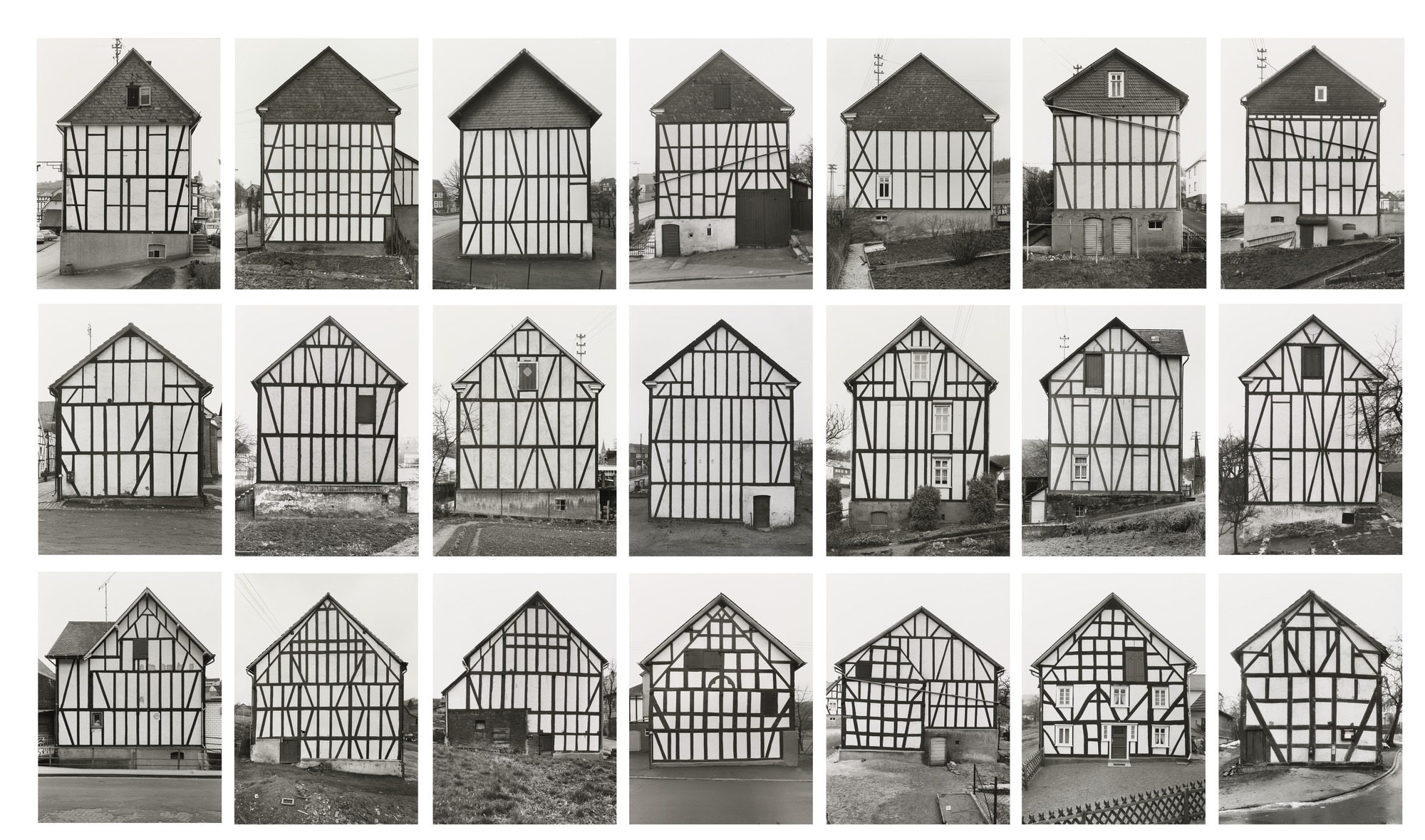
Bernd and Hilla Becher were German conceptual artists and photographers working as a collaborative duo. They are best known for their series of photographic images, (or typologies,) of industrial buildings and structures, often organised in grids. They influenced many documentary photographers and artists.
Bernd Becher was born in Siegen. He studied painting in Germany from 1953-1956, then typography (the art and technique of arranging type to make written language legible, readable, and appealing when displayed) from 1959-1961. Hilla Becher was born in Potsdam. After Hilla’s time studying photography at the Kunstakademie Düsseldorf from 1958-1961, she had completed an apprenticeship as a photographer in her place of birth. They both began working as freelance photographers (self-employed) for the Troost Advertising Agency in Düsseldorf, concentrating on product photography (advertising or commercial photography). The couple married in 1961. Bernd and Hilla Becher first collaborated on photographing and documenting the disappearing German industrial architecture in 1959. The Ruhr Valley, (where Becher’s family had worked in the steel and mining industries,) was their main focus. They were fascinated by the similar shapes in which the buildings were designed. After capturing thousands of pictures of individual structures, they noticed that the various large buildings, (of cooling towers, gas tanks and coal bunkers, for instance,) shared many distinctive formal qualities. In addition to this, they were intrigued by the fact that so many of these industrial buildings seemed to have been built with a great deal of attention towards its design. Together, the Bechers went out with a large 8 x 10-inch view camera and photographed these buildings from a straightforward “objective” point of view. They only did their shoots on overcast days, (to avoid shadows,) and early in the morning during spring and autumn. Objects included barns, water towers, coal tipples, cooling towers, grain elevators, coal bunkers, coke ovens, oil refineries, blast furnaces, gas tanks, storage silos, and warehouses.

This typology created by the Becher’s shows their objectives of conceptual art. They wanted to create a series of images where every object showed similar characteristics. These images were taken in Germany, as their images were based around the German industrial architectures. Each image is similar to the other, because of the repeated lines of wood that are used as part of each houses construction. This repetition effect is something that intrigues me towards these series of images. I like how each house has a triangular rooftop – the houses are a classic shape and although they seem like original shaped houses, they all have their own speciality that differentiates them from each other. For example, on the bottom row, second image from the right, this house appears to have 5 rectangular windows with a variance in how the panels for the window are displayed. The white panels all determine how many small squares there are inside of the window – some windows have 6 small squares, some only have 2 squares and 2 long rectangles. This same house has 1 door that has 2 slight windows either side of the door. This house is very different to the houses around it on the grid format, that the Becher’s used to create their typology. However, they all have similar shapes and objects that create the houses.
